Intro
I was interested in: do exist big differences in the performance of the 486 chipsets which I own?
But the measurements were not so easy because 486 era starts with ISA/VLB and 5V CPU's motherboards and ends with PCI and 3.45V CPU's.
I decided to do all measurements with a 5V AMD 486DX2-66 because it runs on all boards. And, its 33MHz bus clock is maximal compatible to Vesa local bus (VLB) and PCI.
For all VLB boards I used a simple Kentech EVLSIO-V2-003 controller with the Promise PDC20630 IDE controller (with fastest speed setting).
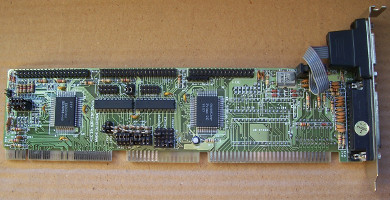
I did the MegaFlops measurements as double-check. All boards should show the same result here (because it is always the same processor).
The integer calculation power of the CPU depends on the performance of the 2nd level cache system. So I measured it for all boards.
Please keep in mind: if I say chipset A is slower than chipset B - it is not entirely correct. Better would be: motherboard A is slower than motherboard B - perhaps the chipset A is fast but the motherboard manufacturer hasn't implemented it optimally. For an absolute statement you would need two or three motherboards with the same chipset from different manufacturers...
All measurements are documented here.
Boards for 5V CPU's only
UNICHIP 486 WB 4407 Rev. 1.0 with chipset UNIchip U4800-VLX (date code: week 27 / 1993)

The chipset was already used on some (late) 386 motherboards. The board has "Write-Back" (as cache strategy) in its name but this is also urgently needed: if you select "Write-Through" in the bios the transfer rate to the cache drops by app. 60 percent.
I measured this motherboard first - it gave it the status of a reference board... :o)
Forex FRX46C521 with chipset Forex FRX46C521A (date code: week 49 / 1993)
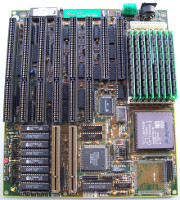
The Forex chipset looks like the UNIChip one on the first view. I checked the positions of some pins and found differences.
And the Forex chip performs much better than UNIChip:
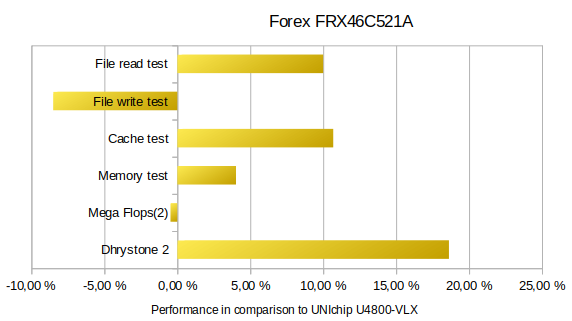
PcChips M601 Rev. 1.3A with chipset SARC RC4018A4 (date code; week 42 / 1993)
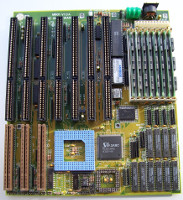
UNIchip doesn't give SARC a chance:

EDOM MV020 Rev. D with chipset HiNT CS8005 (no date code, board: October 1994)
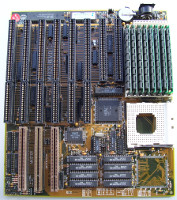
This board has a very good transfer rate to the cache system:
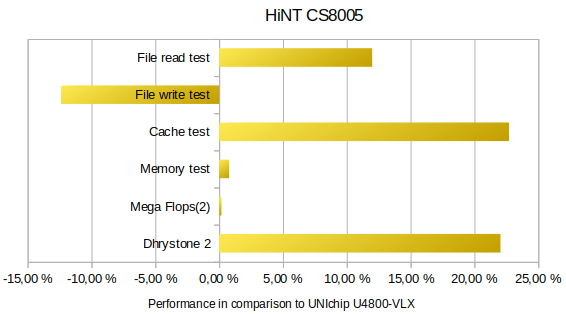
CQ1MB with chipset CONTAQ 82C596A (date code: week 44 / 1993)

I found this board in the "stason"-database as GREEN G486VLI and "UNIDENTIFIED". The type label in my case is "CQ1MB".
The clock generator on my board is an AvaSem AV9154-04CN16 which needs different jumper settings for JP14 as documented on "stason" (pin 1 is in direction of the keyboard connector):
| clock speed | JP14 |
| 25MHz | 1-2 |
| 33MHz | 1-2 and 5-6 |
| 40MHz | 1-2 and 3-4 |
| 50MHz | 1-2, 3-4 and 5-6 |
This is the first board in the test where I used PS/2 memory. But it didn't help:
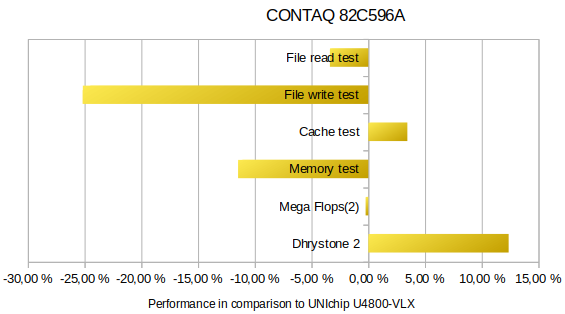
Boards which are ready (or prepared) for 3.45V CPU's
DFI G486-EVB Rev. A with chipset EFAR EC802G (date code: week 3 / 1995)
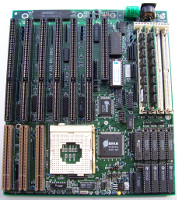
The first 3.45V board is also the first one with a year 2000 problem (AWARD bios). My board has bios version A0. I found on elhvb the version AF which brings new features but doesn't solve the Y2K problem...
But the performance of the board is great:
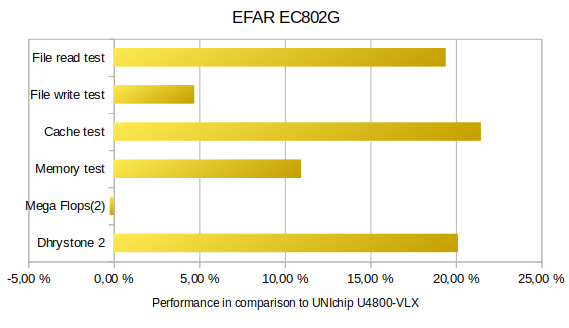
EXP4045 with chipset Winbond 83C491 / 83C492 (no date code, board: June 1995)

The Winbond chipset was relabeled as "ExpertChip" on this board. At other manufacturers it was a "SYMPHONY Wagner". ExpertChip nearly handed over the native chipset names of Winbond (W83C491F / W83C492F).
The EXP4045 has also a Y2K problem but it delivers a wonderful performance:
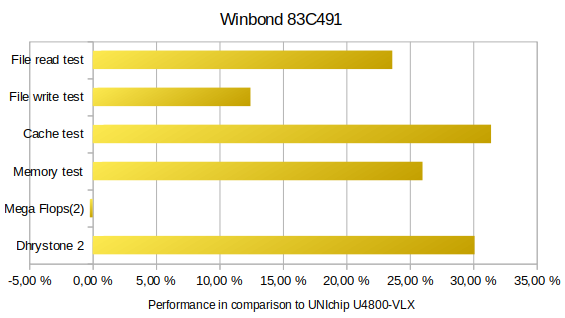
UM4980 with chipset UMC UM8498F / UM8496F (date code: week 52 / 1994)
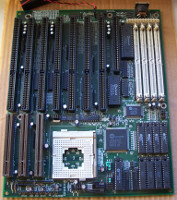
This board has a funny failure: the first character which you input is wrong. I experimented with the latest bios version and with an other keyboard controller - without success. The chipset has the date code: "5294-B0".
The performance is quite good but...
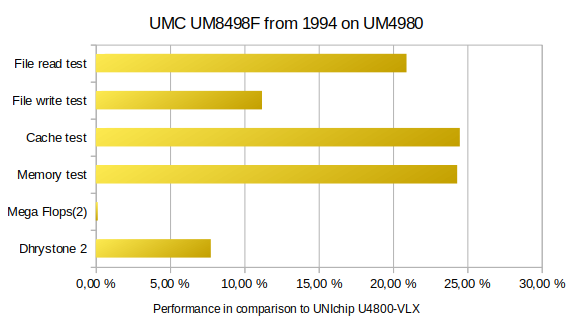
...I also own a PcChips M912 with the same chipset but date code "4595-HYS" (produced nearly one year later) which doesn't have this failure.
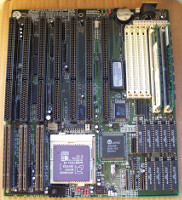
After replacement of the fake cache chips the board performs very well (and defeats the UM4980):
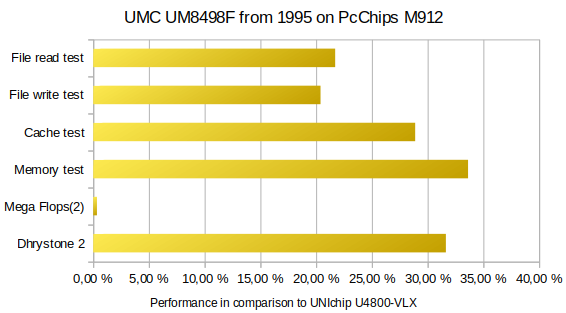
EXP4044 with chipset OPTi 82C895 (date code: week 33 / 1994)
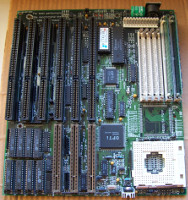
The manufacturer of this board (DATAEXPERT CORPORATION) recommended AMD 486 processors for best performance. Well, we are happy to use an AMD processor for this test... :o)
The performance of the board is quite good:
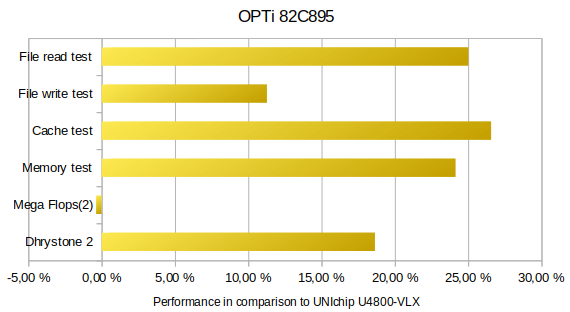
Lucky Star OPTI 895E with chipset OPTi 82C895A (date code: week 24 / 1995)
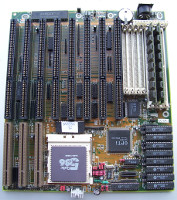
It seems two manufactures have produced it: as Lucky Star OPTI 895A and as EDOM / Win Technology MV035.
The board is a little bit faster than the EXP4044 with the older OPTi 82C895:
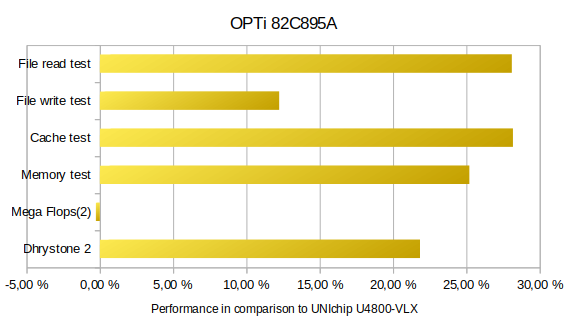
Zida 4DVS 2.0 with chipset SiS 85C471 (date code: week 39 / 1995)
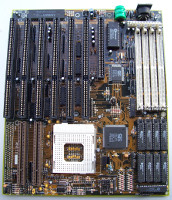
The board supports as cache strategies "Write-Through" and "Write-Back". Both setting are very fast but this is the one and only board in my collection where "Write-Through" is a tick faster...
Very fast cache and memory throughput:
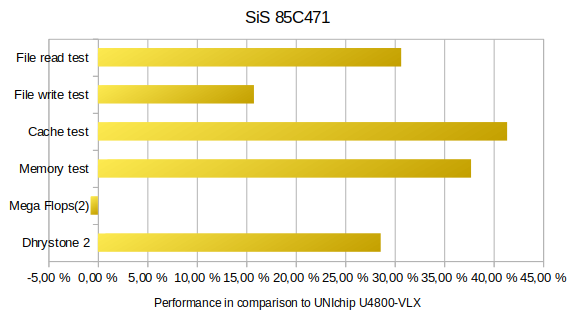
Late 486 boards with PCI-bus
FIC 486-VIP-IO2 with chipset VIA VT82C496G (date code: week 50 / 1994) / VT82C505
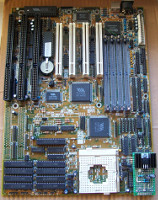
There are some issues with this motherboard: the OAK graphic card produces a strong flickering. I have to use a RealTek ISA VGA-card for this test. I haven't found an option to configure the ISA clock speed anywhere (perhaps a too high clock is the reason for flickering?!).
Some times ago I also tried to get up and running an AMD 5x86 or a Cyrix 586. The release notes of the bios claim to support it but both CPUs are not detected exactly. I read in some forums that I'm not alone with this problem...
The performance of the board is quite bad in comparison to SiS or UMC:
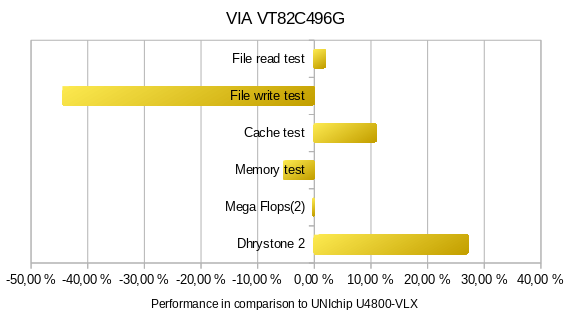
Lucky Star LS-486E with chipset SiS 85C496 (date code: week 19 / 1996)
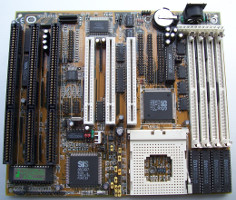
This type of board was a real mass product. But it is far away from 08/15 because it performs very well:
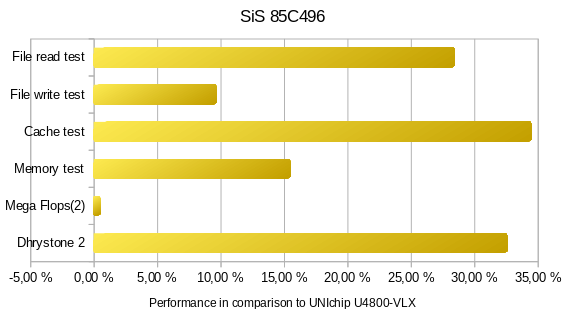
Shuttle HOT-433 Version 4.0 with chipset UM8881 (date code: week 40 / 1996)
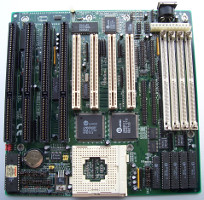
Shuttle HOT-433 is highly regarded in the retro-computer scene because it has enough space for many and long PCI- and ISA-cards.
The performance is very good but it can't expose the SiS 85C496 chipset:
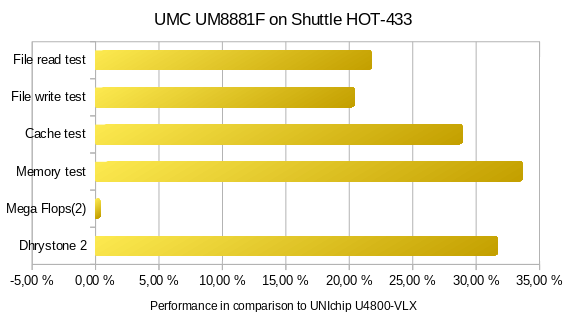
PcChips SYL8884PCI-EIO with chipset UM8881 (date code: week 44 / 1995)
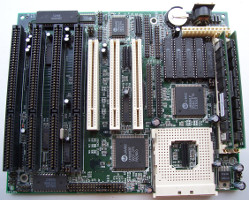
The PcChips board looks like a cost reduced version of the Shuttle HOT-433: they left away two RAM-sockets and one PCI-slots. Also the size of the board is smaller. Nevertheless the layout of the board is well-considered and it doesn't have to hide behind Shuttle:

Summary
- We don't select a "winner", a lot of boards deliver good results.
- It is quite easy to generate 25% more HD, CPU and memory performance if you select a fast motherboard. And 25% is a really noticeable increase.
- Personally, I have to admit to myself: I've collected too many 486 motherboards... :o)
falk.richter*at*yandex.com
Last update: May 22, 2021